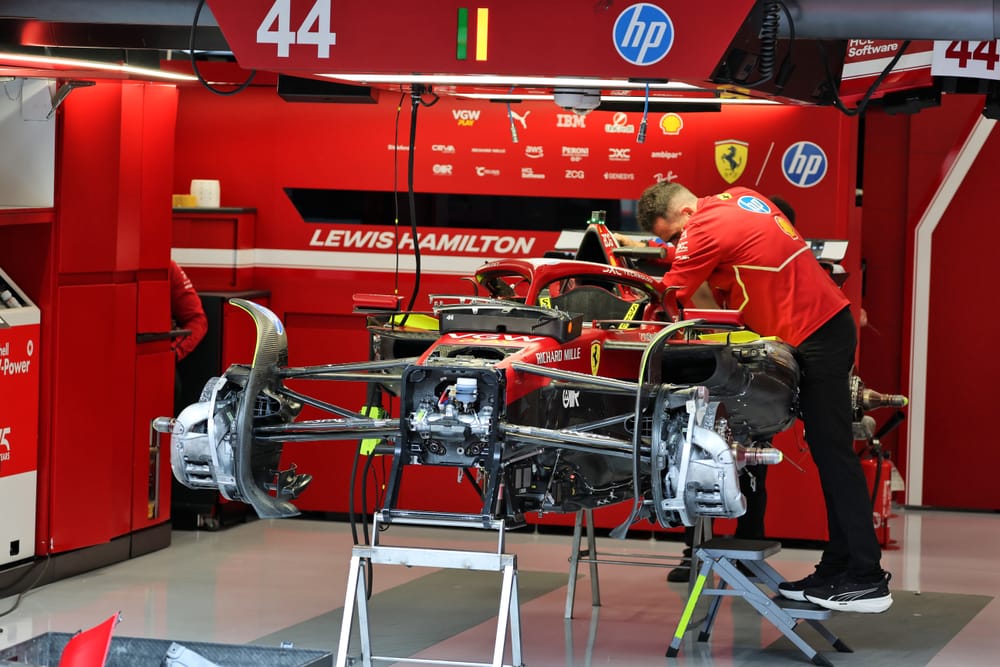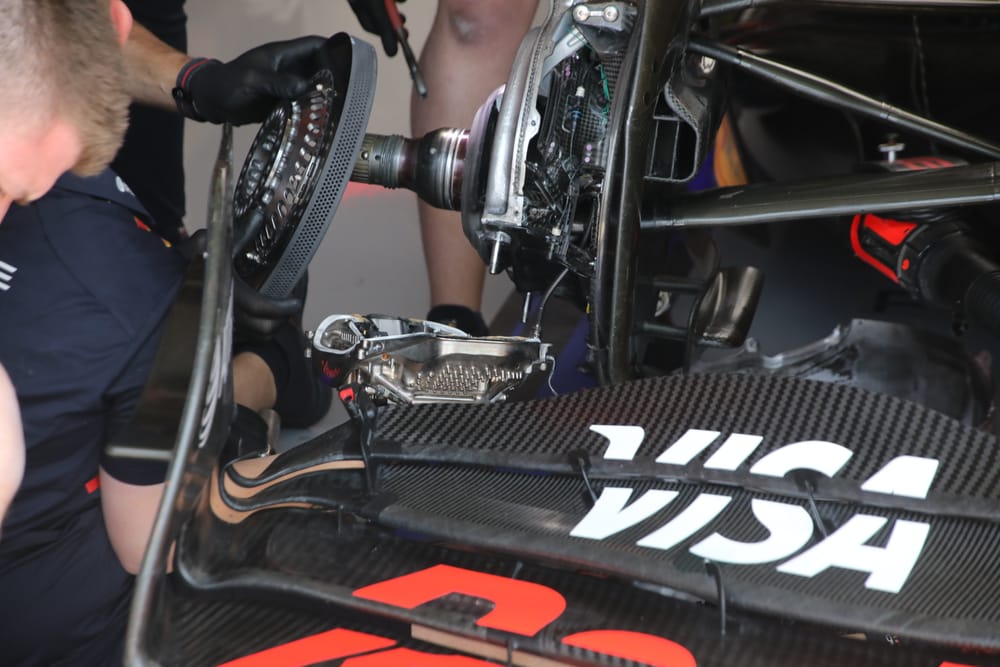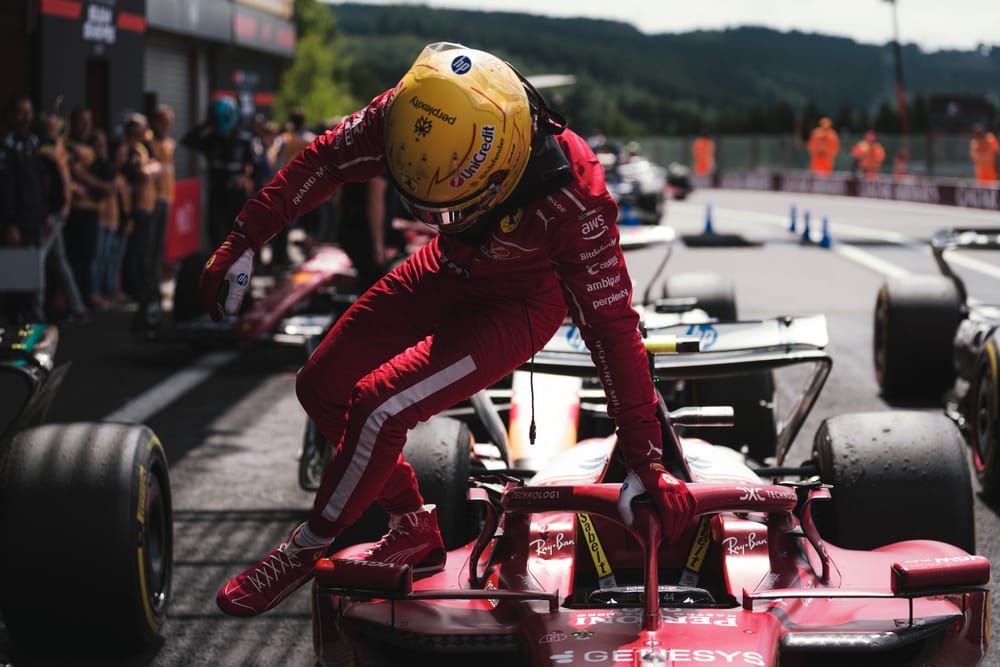Lewis Hamilton’s adaptation to Ferrari has been more difficult than he and his new Formula 1 team anticipated – with boss Fred Vasseur saying recently they had been “stupidly expecting” to have everything under control.
After nearly two decades racing exclusively with Mercedes engines, for example, it has been a challenge for Hamilton to get the most out of the completely different power units at Maranello.
But it is not just on the engine front where things have been novel, because he has also had to get used to working with new braking components after linking up with Ferrari’s long-time partner Brembo.
For someone whose late-braking style had been perfectly honed over the years to the characteristics of Carbone Industrie brake discs at Mercedes (Brembo’s brake calipers are used almost everywhere else), this was an area where Hamilton was always going to face a steep learning curve.
So it was probably no surprise that early in the season, the seven-time F1 world champion spoke openly about needing to reset everything he had learned both in terms of the feel of the brakes but also how the whole car package worked as it slowed.
After the Bahrain Grand Prix in April, he said: “I never used engine braking before. In the past 12 years we never used engine braking but here we use a lot of engine braking to turn the car.
“We have different brakes. The brakes are so much different to what I had in the past and the car moves around a little bit more.
“In the last stint I had to use the rears to turn the car, and other times you have to put all the weight on the front.”
So why have things felt so different, and what progress has been made?
Hamilton's unique style
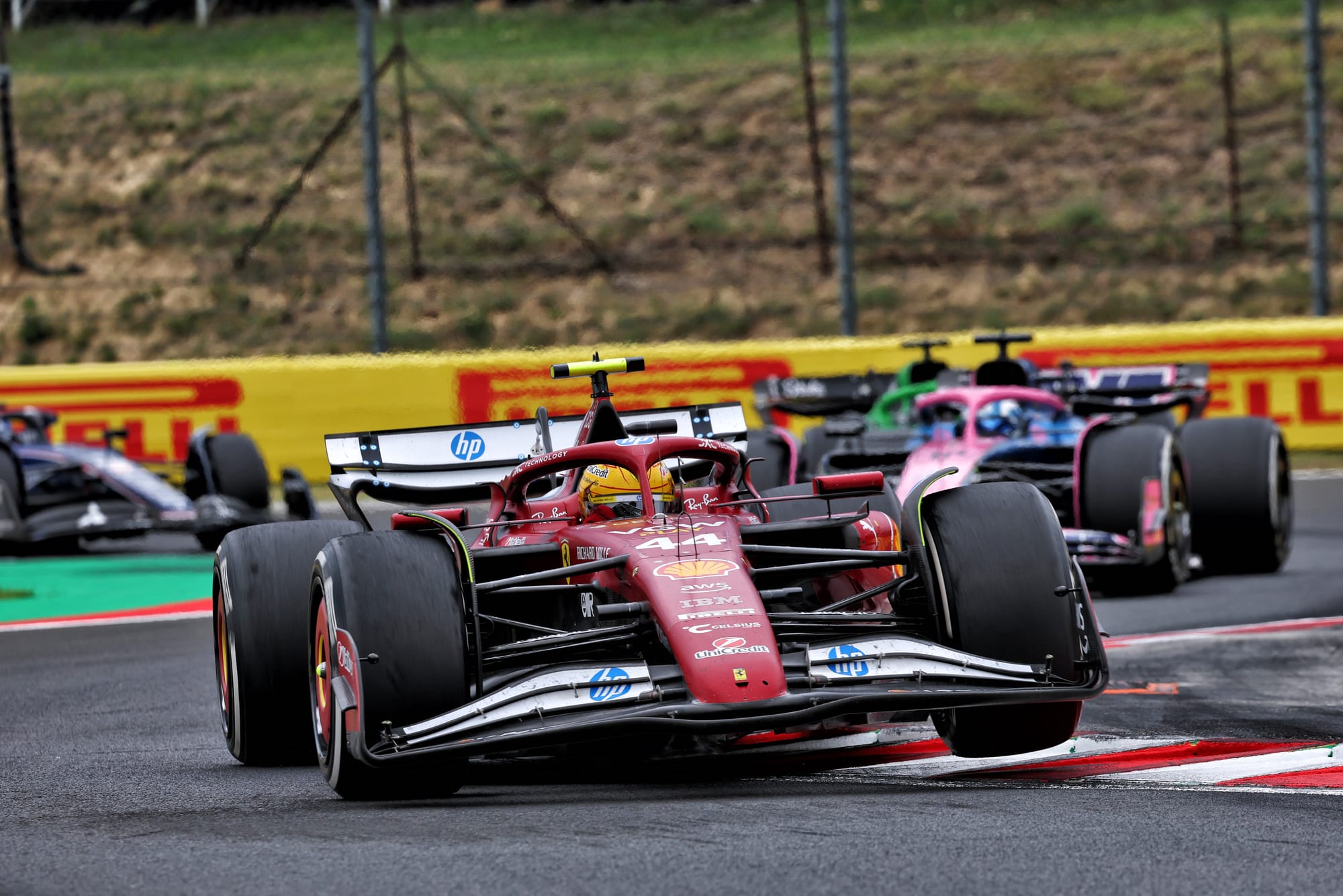
Hamilton has built a reputation as being one of the drivers who puts a heavy demand on the brakes.
In a book titled “Unstoppable” that detailed Brembo’s experiences of working with a host of top drivers and MotoGP riders, it offered some interesting insight into how Hamilton approached braking.
It said Hamilton: “Enjoys an entirely unique feeling with his car. He wants it to focus entirely on the front axle.
“His aggressive driving style means he often locks the wheels.
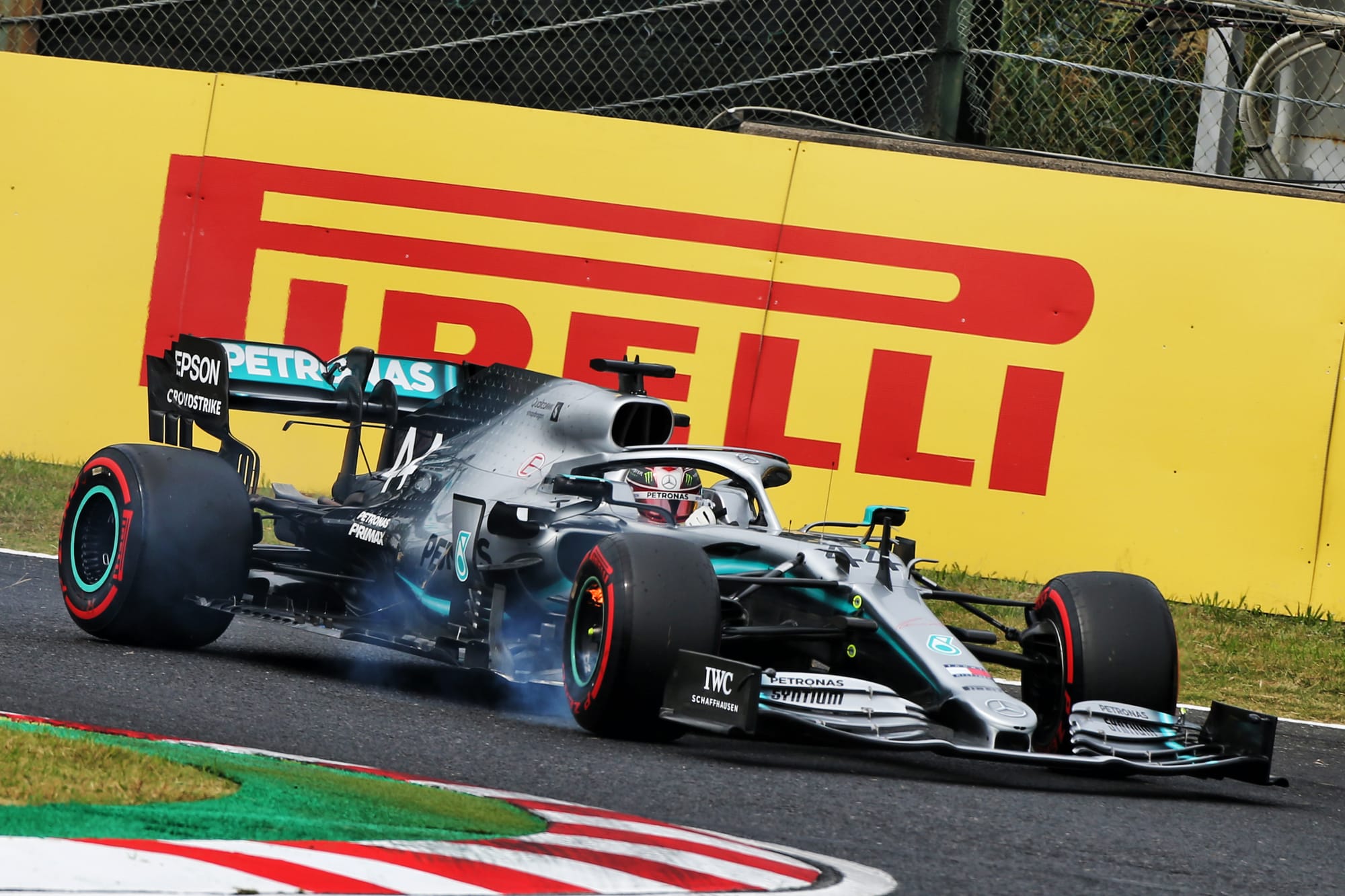
“Lewis is extremely reactive when he starts to brake; he then often exceeds the tyre grip limits and only then, after exerting peak pressure on the pedal, begins to control the action of the braking system.
“[He] wants perfect control when entering a corner, often releasing the throttle once in the turn. In fact, the first part of the braking ends at the entry, thus reducing the footprint and increasing the ease of internal front wheel locking.
“The only limit that Hamilton knows, according to engineers he works with, is the maximum temperature of brakes.”
Hamilton's style, of wanting that strong initial bite before modulating the brake pedal to keep himself under the threshold that risks front locking, worked so well with Carbone Industrie characteristics.
It is widely understood that Carbone Industrie’s pad/disc combination has a very strong initial bite when hot – perfect for that initial phase where Hamilton stamped on the pedal.
This feel comes from a characteristic where it appears to offer peak grip at higher temperatures.
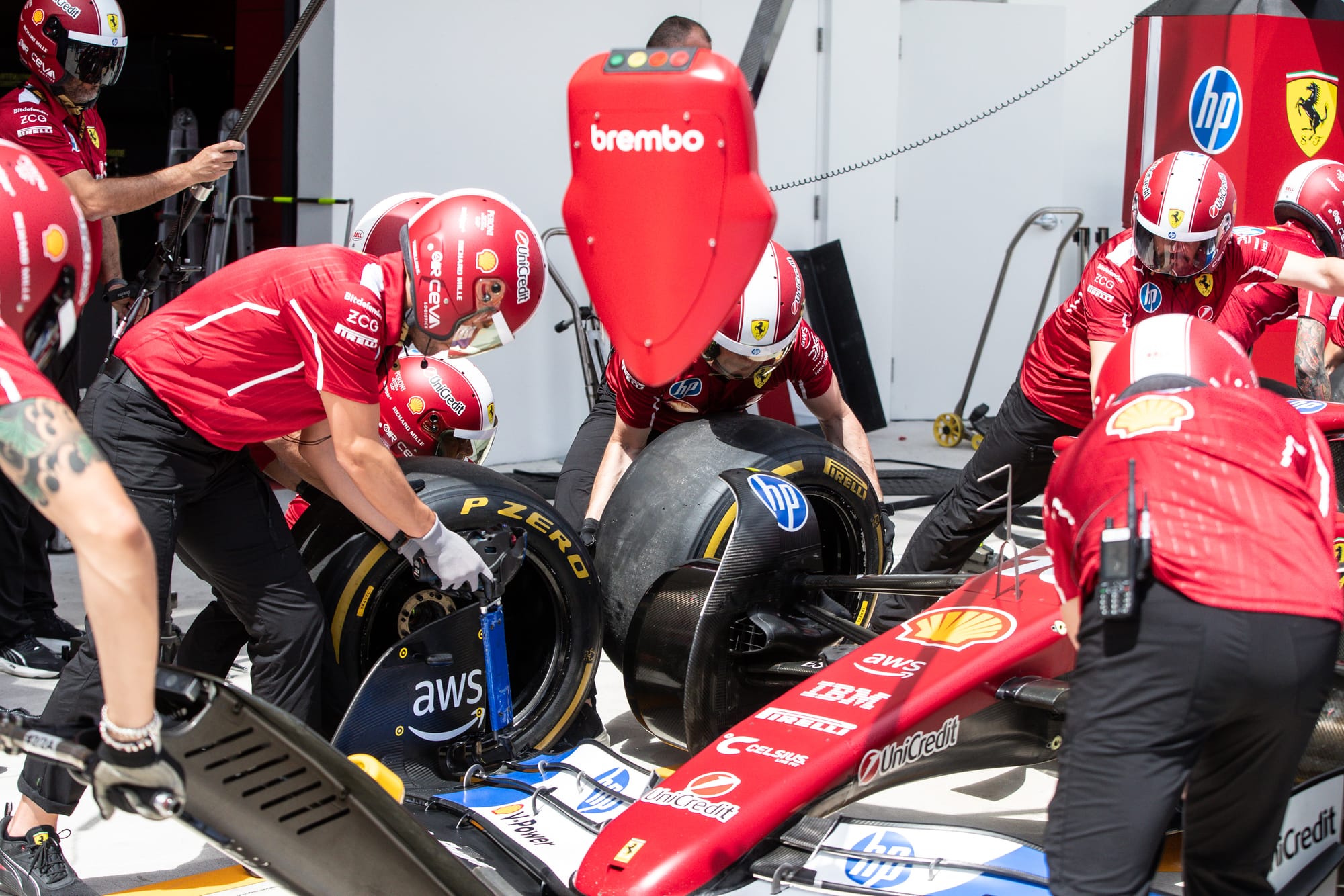
In contrast, Brembo’s products are much more progressive and consistent throughout the whole braking phase and temperature range, so they operate strongly in both hot and cold conditions.
While its approach may not offer the ultimate best stopping power when the brakes are hot, there are benefits in terms of it also meaning there is a lower wear rate – which means a more stable platform for the driver and a constant brake pedal feel.
From the perspective of driver feel, the differences between the two may seem subtle, but they can be critical when it comes to extracting the final bits of performance – especially for someone like Hamilton who is so strong on the brakes.
As Vasseur said recently about details making a difference to Hamilton’s season: “If you are struggling with the brakes because it's a bit different compared to what you were used to deal with, you are speaking about half a tenth.
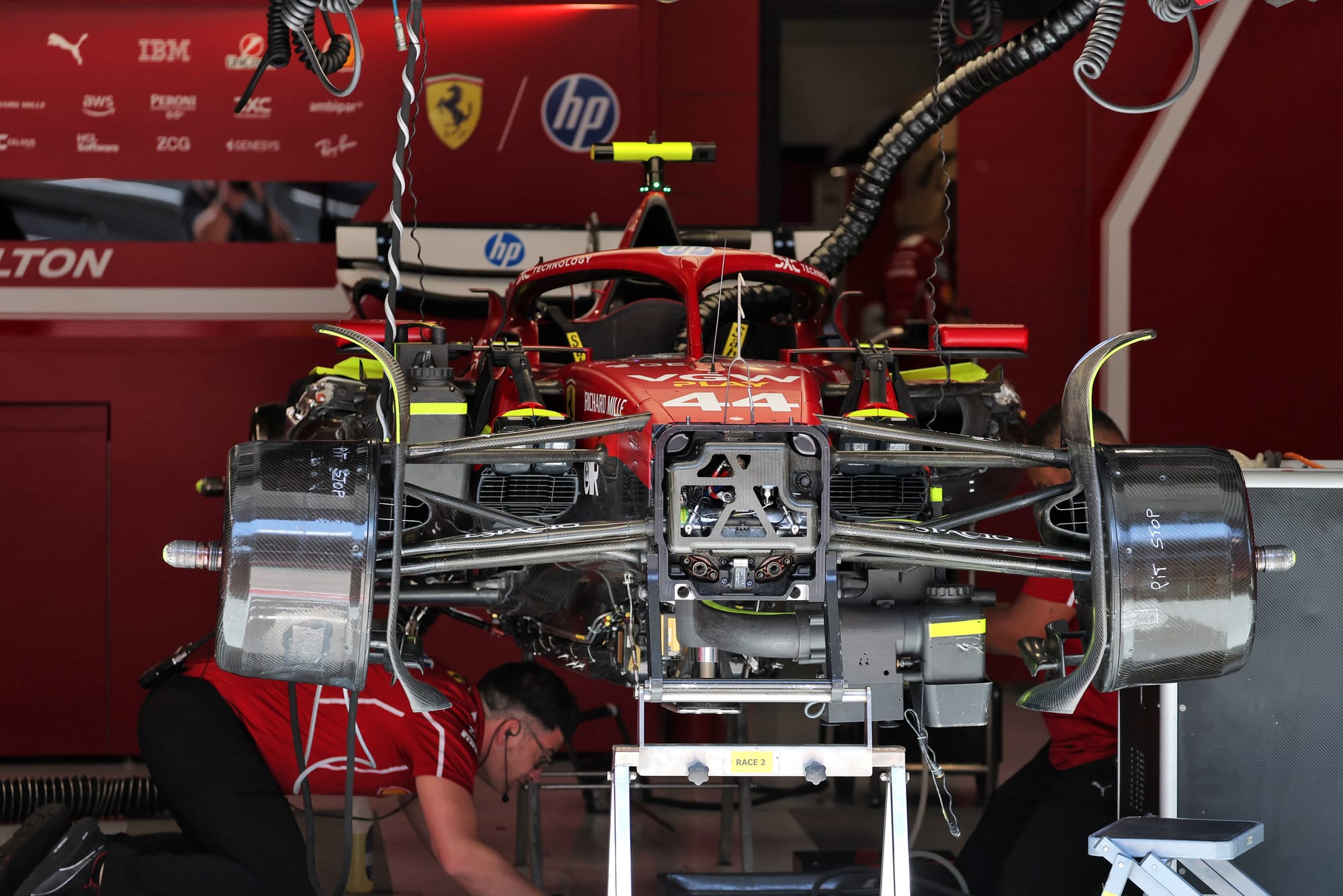
“But half a tenth today is the difference between him getting into Q3 and not getting in.”
It would be wrong to say, however, that one braking characteristic concept is better than another in pure lap time terms, because it all comes down to individual preference.
As Brembo’s F1 Customer manager Andrea Algeri told The Race: “Braking feel is like putting a shoe on your foot. It may not be the best one, but if it fits you it is better.
“So even if you manage to increase a bit of the general performance, you are then changing the equilibrium that the driver felt in the last few years.
“So it is not always true that an upgrade is always a good thing for the driver.”
Finding the comfort zone
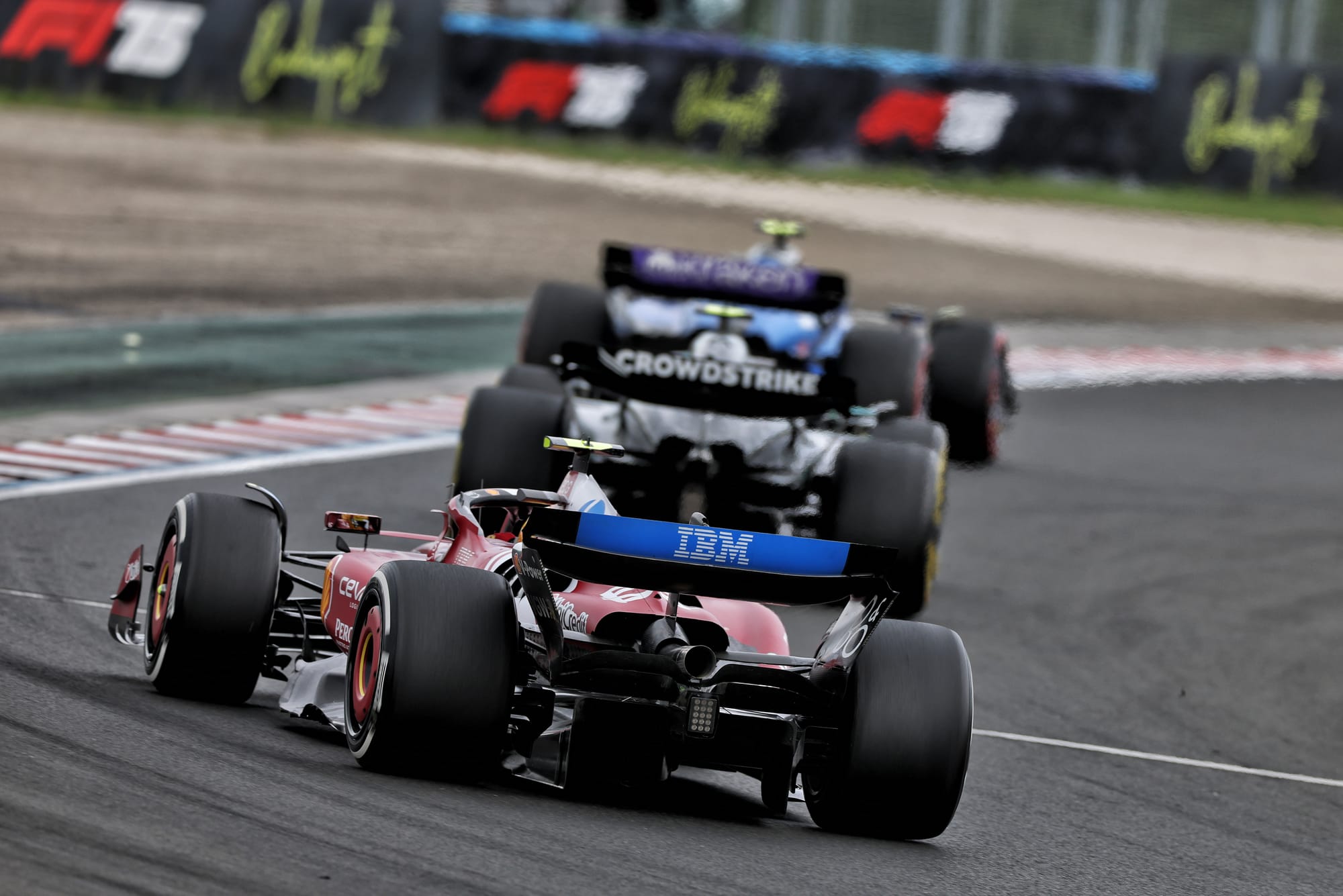
Brembo always knew that Hamilton was going to be demanding when it came to his expectations of the brakes.
But it was never going to be a case of simply expecting the driver to adjust his driving style to suit what Brembo offers. Instead it has worked hard together to try to deliver something that best suits.
Algeri said: “It was very exciting to start to work with Lewis. Obviously, we had some complaints from him within our regular communication and so on, and we are working hard to try to put him in a comfort zone in terms of braking.
“We know he was used to a different material first, but also a different set-up in terms of general braking of the car that are not only the brakes themselves, but also engine braking, energy recovery and so on.
“So we have been pushing a lot from the team, and we are working hard to try to solve the situation and to have the best result from him.
“On top of that, Ferrari is obviously pushing to be in front, and as usual, is one of the teams that gave us the right pressure to go ahead. We are happy to do it. It's challenging.
“Obviously, I'm not hiding myself. It's challenging because it's really an important job that we are doing, but it is also the way we get to improve our product.”
Making improvements
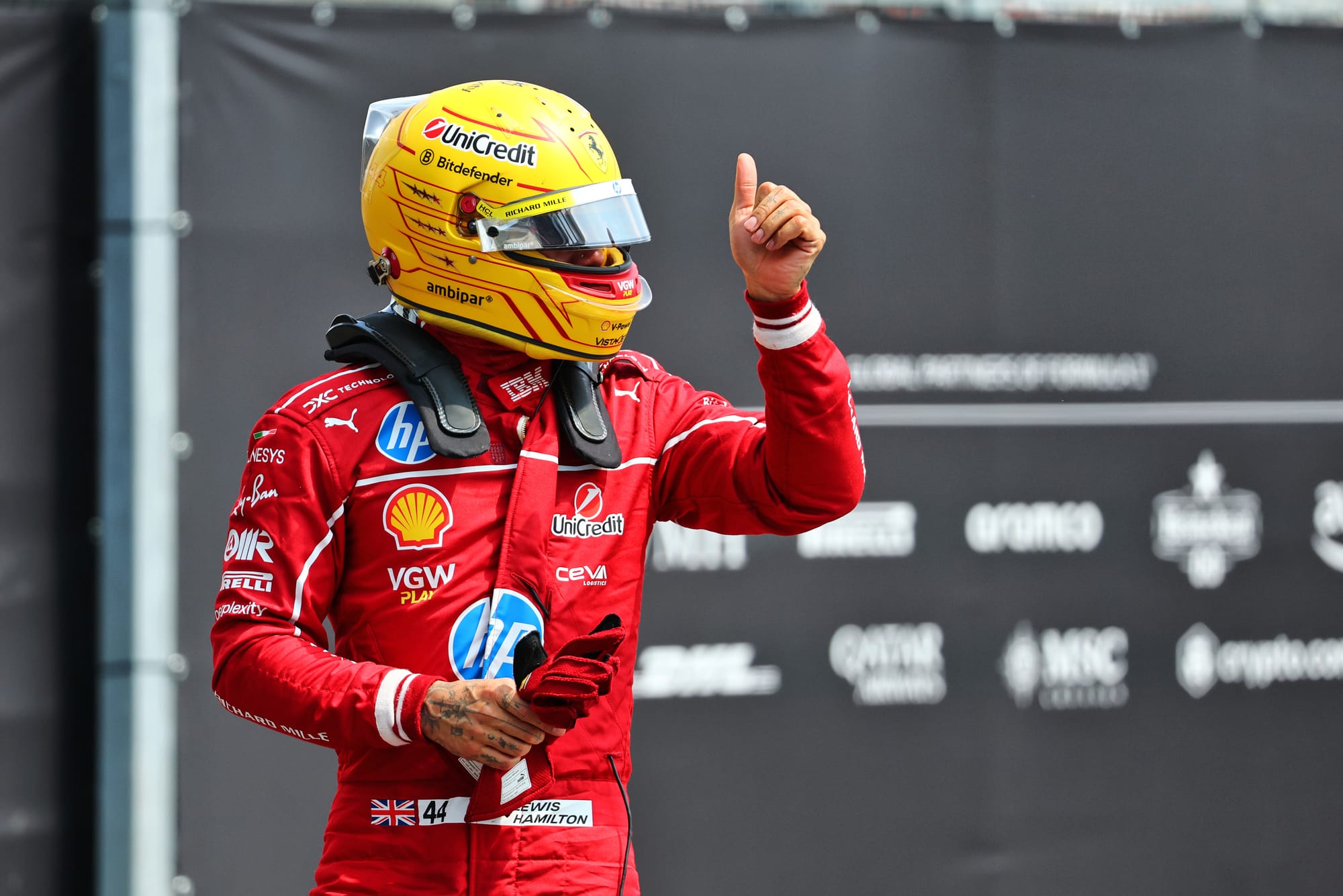
One of the most public changes introduced by Brembo this season was the introduction by Ferrari of a new brake pad material in response to requests that Hamilton had made.
First tried out by Charles Leclerc in Canada in June, and then by Hamilton from Belgium a month later, Algeri explains it is all part of the process of trying to best match driver feel and product – even if both drivers were caught out by spins on their first weekends running them.
“We have worked on the pad material itself, specifically to give some sort of variation for this generation of mu [the coefficient of friction between the brake discs and pad] that can suit more his [Hamilton's] driving style,” explained Algeri (below).
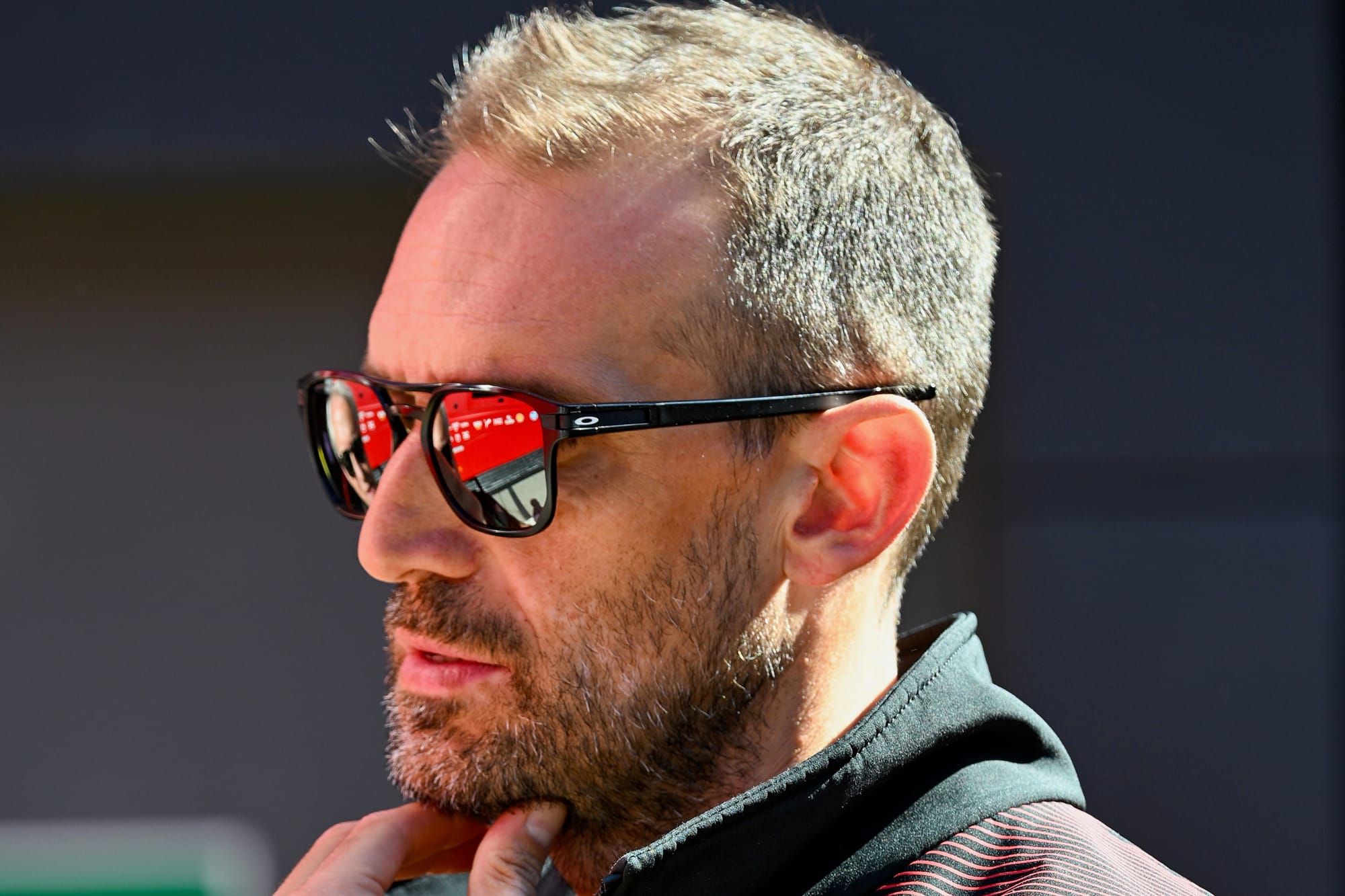
“Obviously it is something that takes time to be developed and tested, and the reason is that, in general, the carbon production process is quite long.
“So even if you design an experiment with some of the components, it takes time to be realised and tested by the team. If you are lucky, it takes weeks, if not months. So it's quite challenging, but we are going in this direction.”
Finding the right compromise
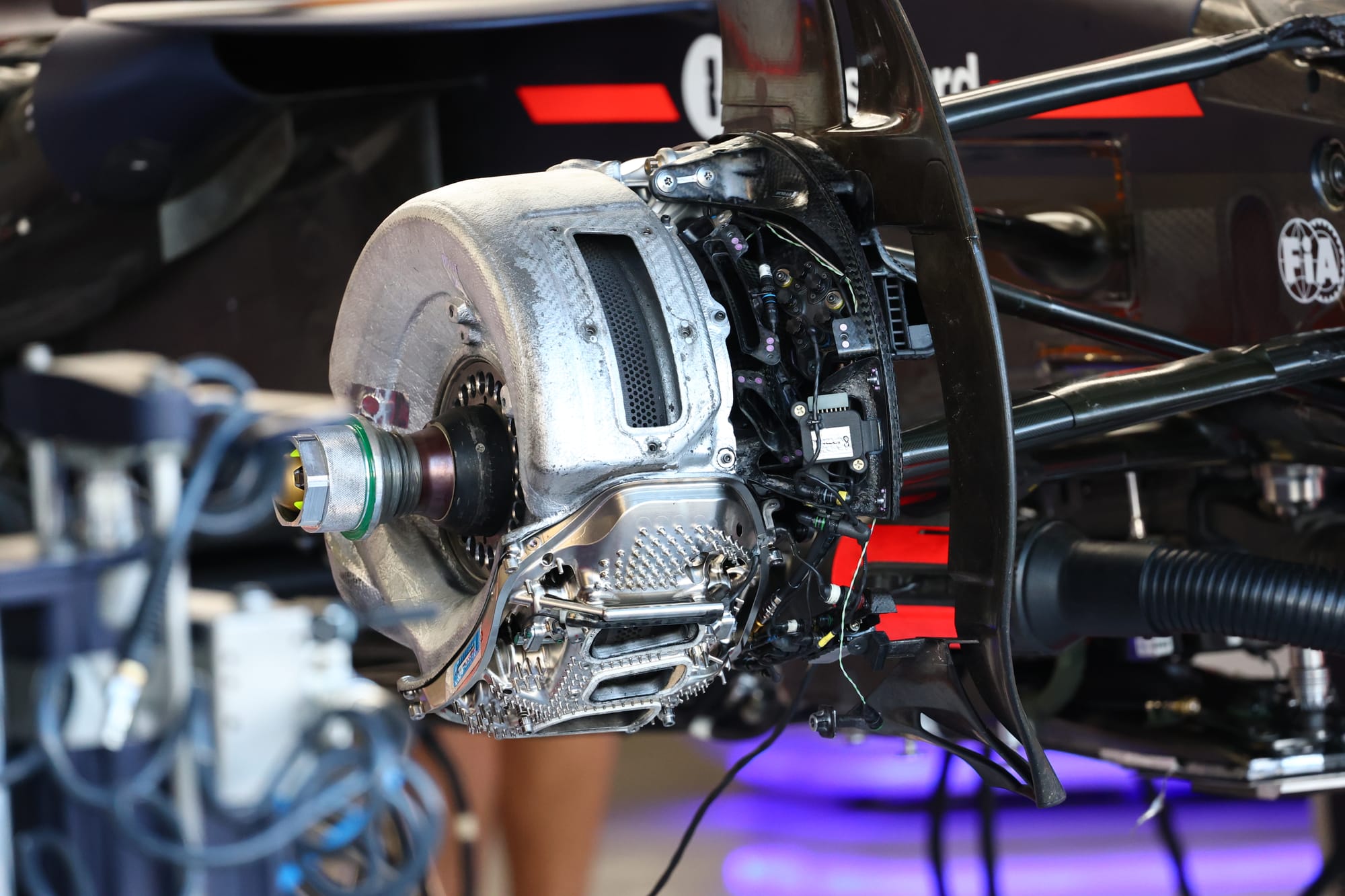
While the brake pad change was a notable step, what is unlikely to be altered is Brembo’s overall product philosophy and where it pitches its brake disc/pad interaction in terms of global performance.
It is far too simplistic to suggest that it needs to simply come up with something that offers more initial bite on top of its other qualities, because the situation is a complex one.
Delivering a gain in one braking characteristic could have a negative impact on something else.
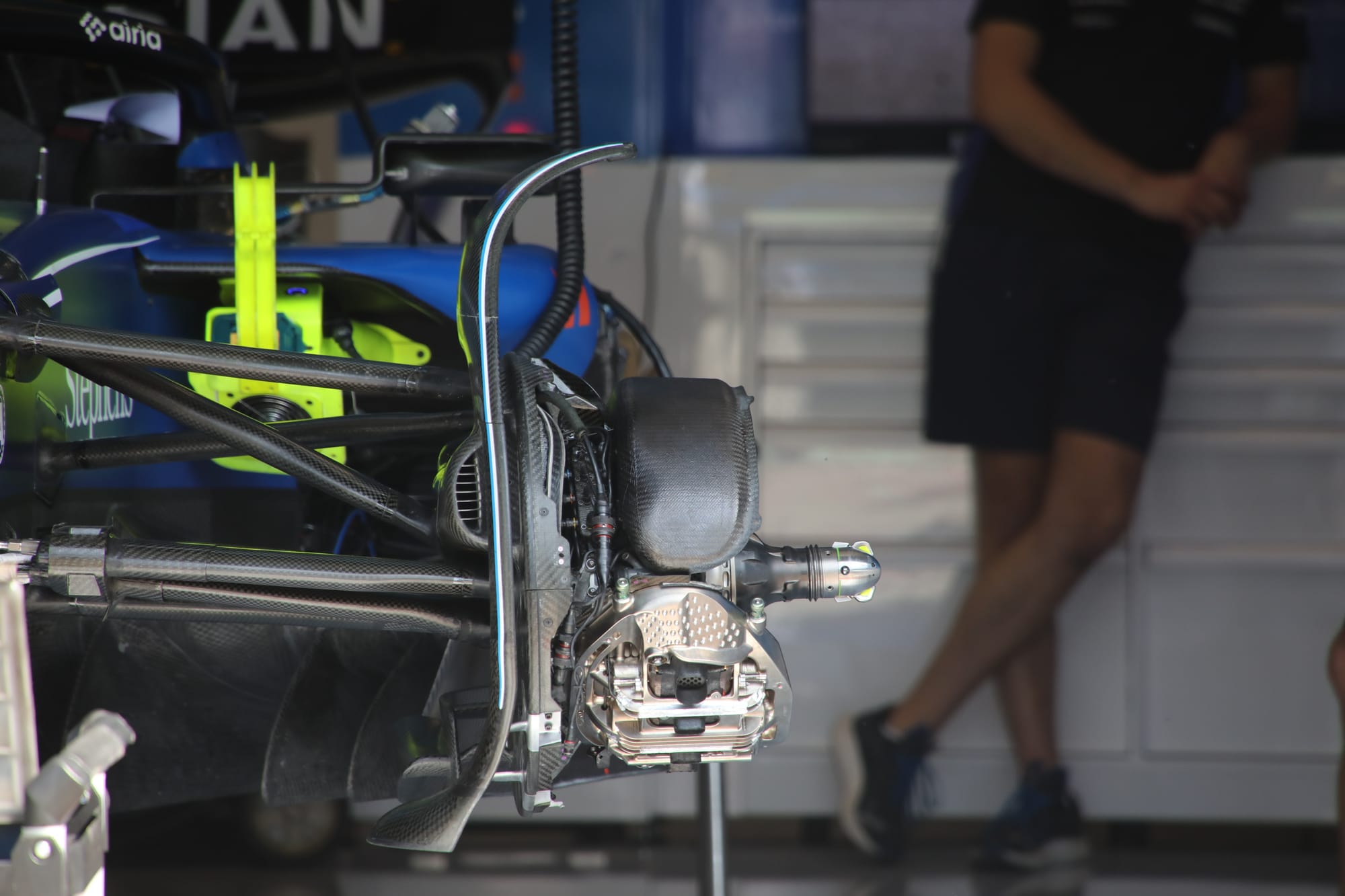
Having something with a strong initial bite when hot is good in some circumstances, but it is not necessarily ideal for everything.
Algeri added: “When you design a material, you can master being perfect at very low temperature, or perfect at very high temperature and stable in the middle.
“You have to basically use the parameter of the process to design the material itself, and the characteristic that, in your opinion, is the best for this kind of car.
More on Hamilton's adaptation
Hamilton blames new component for two Ferrari accidents
Ferrari 'probably need to change driver' - Hamilton at alarming low
Ferrari made major Hamilton engineer change before Belgian GP
“If you try to get more performance at high temperature, maybe you lose a bit of warm up capacity and so on. So it's always a trade off.
“It is difficult to find the right balance that is OK for everybody and for all the cars, because the brake manoeuvre is related to the carbon material, the pedal, the stiffness of the caliper, and so on. It’s blended with the whole system of the car.
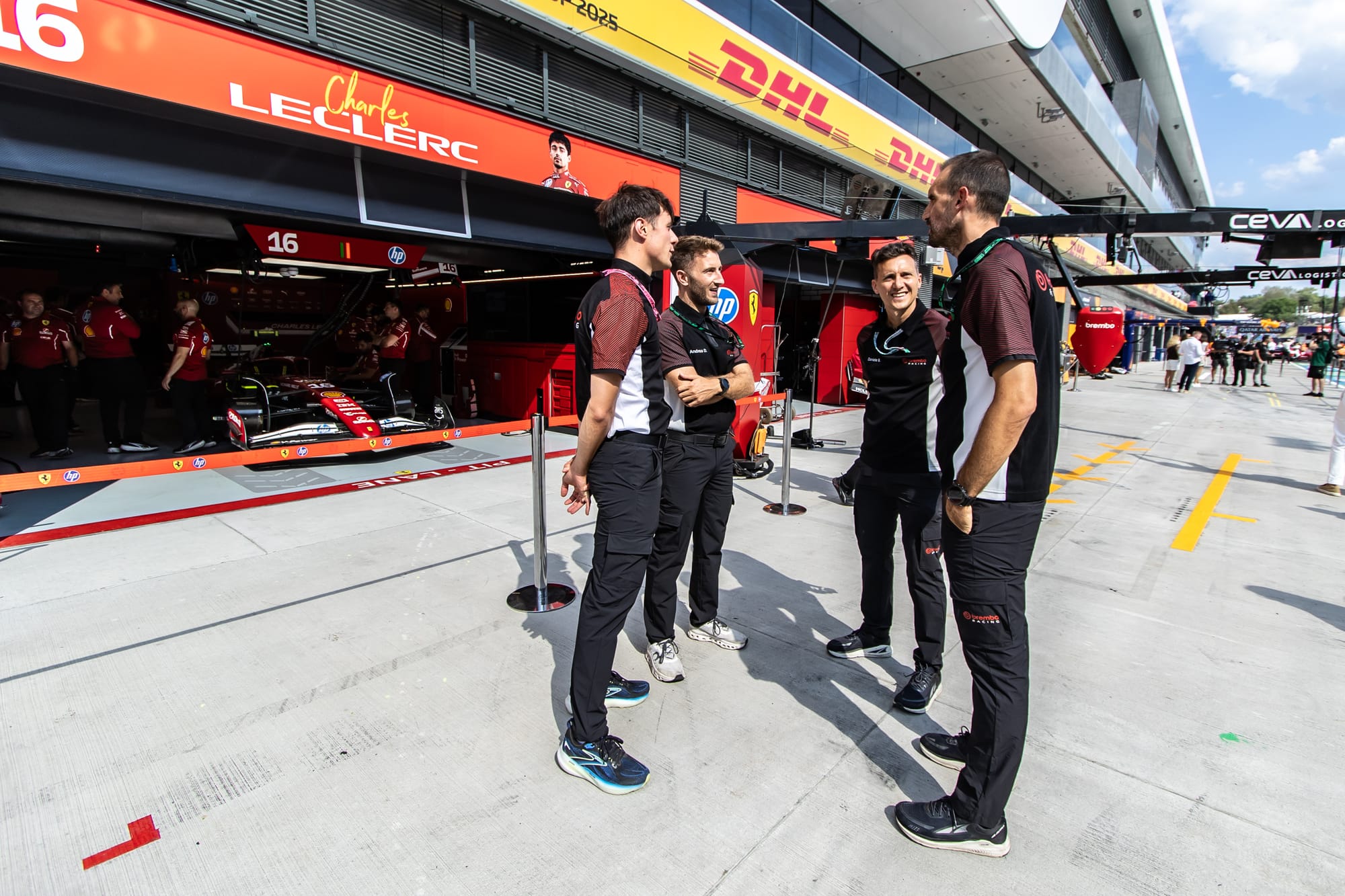
“So this probably is the main point of discussion with Ferrari. The way that we are working with them is to try to have a brake that suits the driver feel and the car behaviour in the best way possible.”
Algeri explains that the choice all brake suppliers have to make is where do they want the compromise to be – as there is no solution that works perfectly for all circumstances.
“Brembo, since the beginning of the production of the carbon, believes that the key characteristic of this carbon should be that it is easy to use when cold and in wet conditions, or when we have the safety car and so on,” he added.
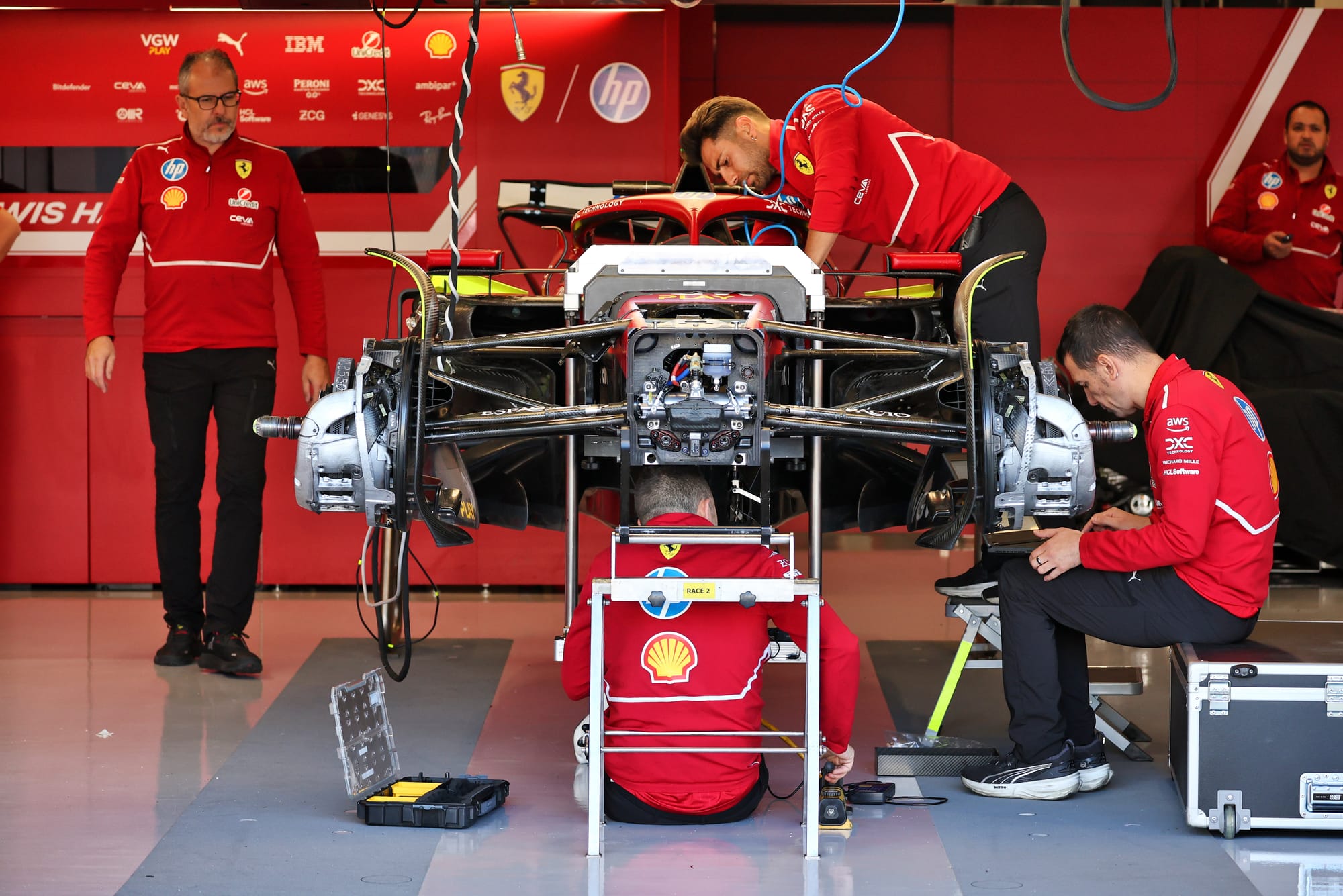
“That means being stable across different temperatures, even if maybe giving up a bit of pure performance when you are very hot. Carbone Industrie has a different approach.
“Our different approach is also measured in the wear rate that we have. Our material wear rate is very, very low. So we are speaking about 0.1 millimetre every 100 kilometres. Our discs can last two weekends in a row.
“So this is the way we design the material. Some of the drivers appreciate it. Some others are a bit, let's say, used to other things.”


